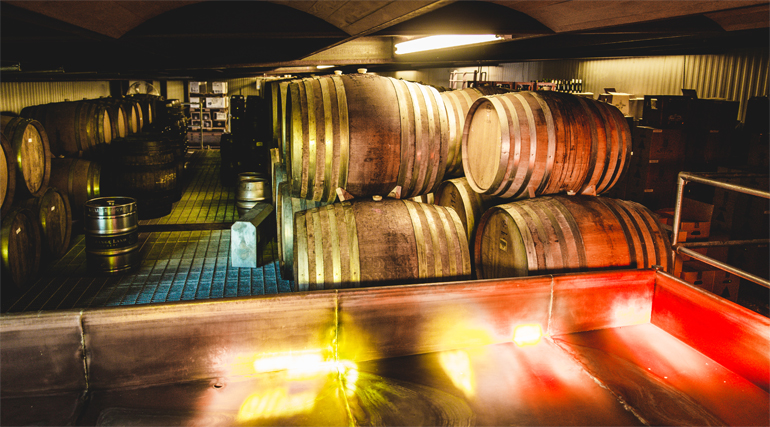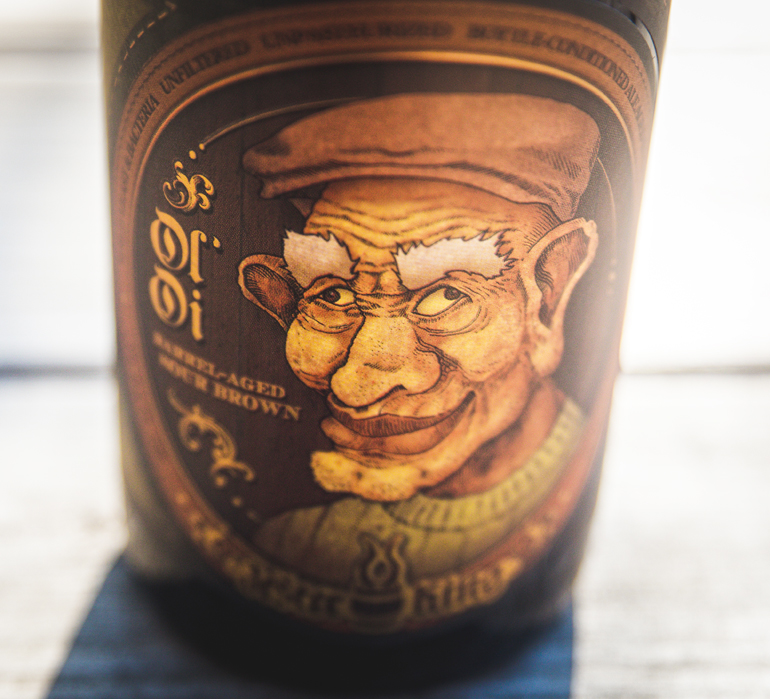Start 14-Day Trial Subscription
*No credit card required

Jeffrey Stuffings of Jester King Brewery
Jester King Brewery's founder and head brewer Jeffrey Stuffings discusses the vibrant craft brewing scene in Austin, Texas as well as his brewery's role therein.
What did you do before joining the craft beer industry?
Prior to joining the craft beer industry I was a lawyer. The job lacked creativity and the culture was fairly oppressive. Craft beer served as a lifeboat out of that world. I started working at Austin Homebrew Supply, which I loved, before starting Jester King a few years later.
What drew you to brewing?
The alchemy of fermentation. Using living microorganisms to create flavor and aroma is an amazing process. The sights, smells, sounds, textures and flavors from fermentation drew me in. The culinary aspect of brewing was also appealing, and I view brewing as an extension of cooking. Finally, the culture of the brewing industry held major appeal; I can't think of a better industry to be in.
How did Jester King get started?
Jester King took three years to get off the ground. In late 2007, I began writing a business plan and working on test batches. By the summer of 2009, I was ready to start fundraising. Around that time, my brother Michael moved to Texas to help me get the brewery off the ground. We raised the money and broke ground in April of 2010, then opened in October of 2010.

Jester King's koelschip allows native yeast and bacteria to thrive during fermentation of the brewery's signature tart beers.
Why does Jester King focus on sours?
We consider ourselves to be an authentic farmhouse brewery, and our philosophy is to make beers with a sense of time and place. A big part of this to us is engaging in mixed-culture fermentation with native yeast and bacteria. We don't explicitly set out to make sour beer, but the bacteria in our mixed culture creates natural acidity, which gives the beer its signature tartness.
It's often hard to keep up with new releases, but Jester King announces one seemingly every week. Why so many different releases from Jester King?
Just as our beer is tied to a place, it's also tied to a time. The reality is that we can only make certain beers at certain times of the year. For instance, the spring and summertime are fruit season, and the wintertime is our spontaneous season. The ambient temperature and ratio of yeast to bacteria in the air also controls when we can make certain beers. Noble King Hoppy Farmhouse Ale, for instance, is a beer that needs to ferment quite hot (upper 80s Fahrenheit) to get the flavor and aroma profile we want. We can't maintain these high fermentation temperatures in the winter. Likewise, we've found that when fermentation temperatures dip down into the 50s and 60s, the yeast is stunted and the bacteria dominate. Therefore, we make beers where we want more acidity in the winter. Various ingredients themselves are only available to us at certain times of the year, whether they be fruits or vegetables. Finally, we like to keep our brewing environment fun and interesting. Making the same beer day in and day out isn't of interest to us.
What's the craft beer and brewing scene in Texas like?
Growing fast! I saw an analysis recently stating that if Austin, Texas was a state rather than a city, it would rank 11th in the country in breweries per capita. Dallas, Fort Worth, San Antonio and Houston all have rapidly emerging beer scenes too. Locally, I love the American and English styles from Real Ale Brewing Company, and the Czech and German styles from Live Oak Brewing Company.
With sours firmly entrenched in the public's consciousness, how do Jester King beers stand out from all the others?
As I mentioned before, our beer is a product of its specific time and place. We embrace our natural surroundings to make beer that simply would not exist were it not for our surroundings. For instance, we use raw Hill Country well water, local grains from Blackands Malt, aged hops from our barn, and native yeast and bacteria cultured from the land and air around our brewery. Our beers are inextricably tied to our environment. Also, while we're not alone on this, we try to balance the acidity in our beer to make it very drinkable – we don't embrace a "sour for sour's sake" mentality. We control acidity through time, temperature, hops and blending, and we strive to incorporate acidity as one of an array of flavors in our beer. Finally, it seems like virtually every sour beer on the market these days is kettle-soured. While kettle-soured beer certainly has a role, there's no replacing the complex results of extended fermentation and maturation with native yeast and bacteria.
Your artwork and branding is extremely eye-catching and interesting. How important is that aspect to your business, and who does Jester King's artwork?
Thanks! All our artwork is by Josh Cockrell of Jester King. Josh was our first employee. He helped with brewing, tours, deliveries, maintenance and construction before focusing solely on our artwork, which I think is a very important part of our business. It helps complete the story that my brewers and I are trying to tell. Beer is in many ways art, and visual art goes hand-in-hand with that.

All of Jester King's eye-catching artwork (such as Ol' Oi) is done in-house by longtime employee Josh Cockrell.
Most of your beers only come in 750-ml bottles (save for a few exceptions). Why that bottle size?
For a brewery our size (roughly 2,200 barrels per year annual sales) that takes anywhere from three months to three years to make a batch of beer, we need to make a good sales margin off of that beer or we'd go out of business. 750-ml bottles provide us with the sales margin we need to stay afloat. The reality is that if we put our beer in six-pack cans, the price point would be too high. Also, 750-ml bottles allow us to show off Josh's artwork.
Lastly, I read your post about Fantome Del Rey's "ropiness," from a couple years back and was impressed by your honesty. Do you think this level of transparency is rare in the craft beer world, what with everyone in the business still very affected by the "bottom line?"
I don't! I believe it was Sam Calagione of Dogfish Head who said that the craft beer industry is "99% asshole free." This has been my experience as well. A lot of craft breweries, including Jester King, are in many ways glorified homebrewing operations. We as brewers aren't far removed from being beer geeks (and many of us still are). I think this mentality translates into craft brewers by and large being upfront with our customers.

Despite all its success and clout in the business, Stuffings says Jester King is in many ways "a glorified homebrewing operation."
Photos courtesy Jester King Brewery.




Comments